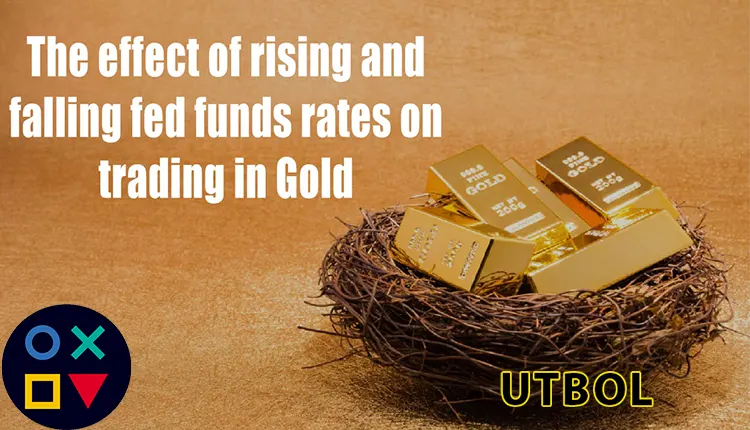The effect of rising and falling fed funds rates on trading in Gold

Numerous financial backers and market examiners trust that, since increasing loan costs make securities and other fixed-pay ventures more alluring, cash will stream into higher-yielding speculations, (for example, securities and currency market reserves). Consequently, when the Central Bank raises its benchmark government finances rate, a shortcoming in Gold ought to follow.
In any case, there’s little proof that Gold is reliably debilitated by government subsidizes rate climbs or Depository yields. Notwithstanding some regrettable relationships during the 2000s, there are extremely many occurrences of Gold and loan costs increasing together to say that exorbitant loan fees make Gold costs fall.
Eventually, the connection between Gold costs and loan fees is unsure and shaky because Gold is exchanged on a worldwide market subject to powers a long way past the span of the Central Bank.
Trading in Gold
- Some market watchers accept that higher financing costs send Gold lower on account of expanded rivalry from higher-yielding speculations.
In any event, a thorough examination of verified data reveals that there is no connection between rates and Gold.
All through a significant part of the 1975s, Gold costs rose forcefully, similarly as loan fees moved higher.
The 1985s saw declining loan fees and a bear market in Gold.
Different variables past rates —, for example, the market interest elements seen in many items markets — are probably going to greatly affect the drawn-out exhibition of Gold. - Even though the inescapable mainstream thinking is that a solid negative connection exists between financing costs and the cost of Gold, a drawn-out survey of the separate ways and patterns of loan fees and Gold costs uncovers that no such relationship exists. The relationship between loan costs and the cost of Gold throughout the last 50 years, beginning around 1970, has just been around 28% and isn’t thought of as critical.
- An investigation of the monstrous positively trending market in Gold that happened during the 1970s uncovers that Gold’s approach to its untouched excessive cost of the twentieth century happened right when loan fees were high and quickly rising.
- Momentary loan costs, as reflected by one-year Depository charges (T-bills), reached as far down as possible at 3.5% in 1971. By 1981, that equivalent financing cost had more than quadrupled, ascending as high as 16%.
- In that equivalent period, the cost of Gold expanded from under $50 an ounce to a formerly unbelievable cost of almost $850 an ounce.
- Gold costs had areas of strength for a relationship with loan fees, ascending working together with them.
Why Do Gold Prices Change?
The cost of Gold is eventually not an element of loan fees. Like most fundamental products, it is an element of the organic market over the long haul. While floods in supply can make the cost of Gold dive, the request is eventually the more grounded part between the two. The degree of Gold inventory just changes gradually, since it requires 10 years or something else for a found Gold store to be changed over into a delivering mine.
